My name is Nazia and I work at Food And Meal. Today I want to share with you my recipe for homemade rice milk. This is a recipe that is near and dear to my heart for a few reasons.
First, I grew up drinking rice milk because I was lactose intolerant. The store-bought stuff was always so expensive, so my mom would make her own. Her rice milk was the creamiest, dreamiest, most delicious thing I’ve ever tasted, and I have such wonderful memories of cozying up with a nice cold glass of mom’s rice milk. So when I saw this simple 2-ingredient rice milk recipe, it brought back all those feelings of comfort and home.
Additionally, as I’ve gotten more into cooking and nutrition over the years, I’ve learned what a wonderfully healthy, affordable, and sustainable plant-based milk rice milk is. It’s packed with nutrients like vitamin B, vitamin C, iron and calcium, it’s budget-friendly, and it has a very low environmental impact compared to dairy milk.
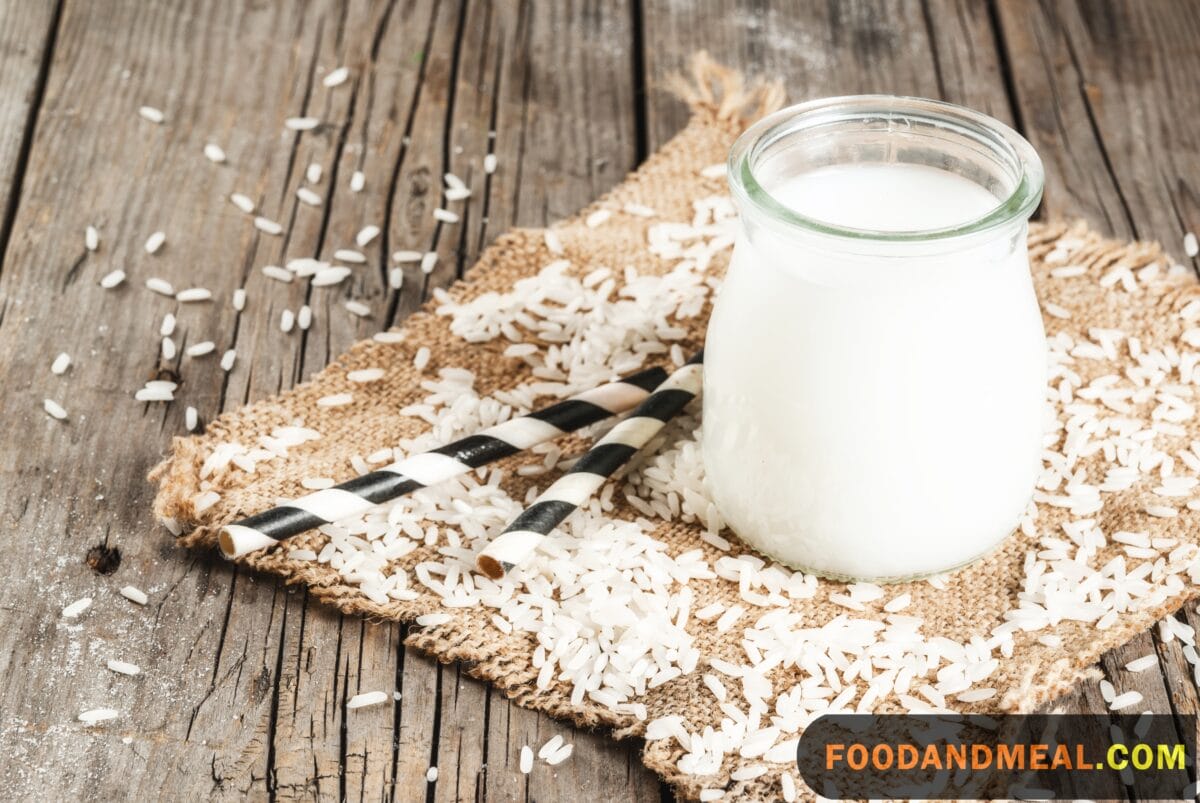
Rice Milk Recipe
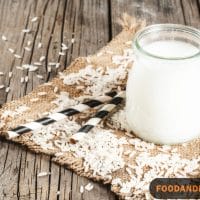
Rice Milk
Ingredients
- 1/2 cup cooked brown rice (100 g)
- 2 cups water (500 ml)
- 4 dates
Instructions
- Blend the cooked rice, dates and water until well blended andalmost smooth.
- Strain the blended rice mixture using a cheese-cloth or astrainer.
- Store the rice milk in a sealed glass container in the fridge forthree or four days.
Video
Notes
also add cocoa powder, vanilla, cinnamon or each flavor to your choice.
Nutrition
© Food And Meal
This website provides approximate nutrition information for convenience and as a courtesy only. Nutrition data is gathered primarily from the Spoonacular Database, whenever available, or otherwise other online calculators.
Alternative Rice Milk Preparation Using a Pressure Cooker
To create homemade rice milk, start by soaking 1 cup of rice in water for 2 hours. Transfer the soaked rice to a pressure cooker with 5 cups of water, cooking on ‘High’ for 40 minutes. Allow natural pressure release and cool the mixture. Blend it until smooth, strain through a nut milk bag, and return to the blender. Add a pinch of salt, 1-2 tablespoons of maple syrup, and 1 teaspoon of vanilla extract. Blend briefly, transfer to a glass bottle, and refrigerate for up to 5 days. Shake before each use to counter natural separation. This customizable rice milk offers a delightful alternative for various culinary uses.
Cooking Tips for Perfect Rice Milk
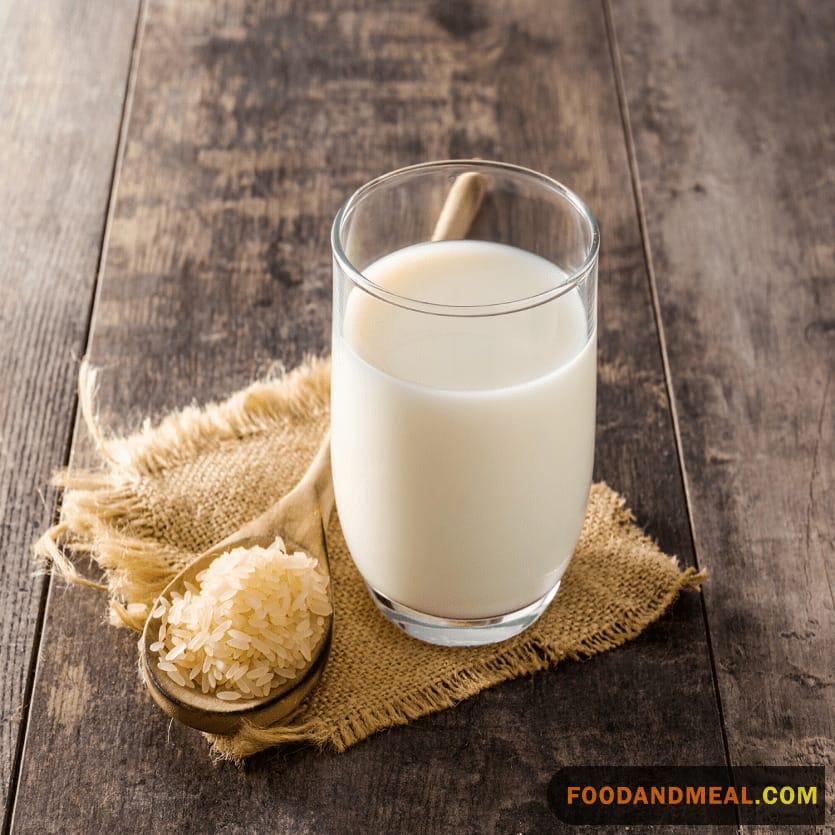
I have learned a few helpful tips over the years that I want to share. As someone who grew up drinking rice milk and now cooks with it all the time, I have really come to appreciate its versatility and how it can elevate so many dishes.
First and foremost, make sure to give your rice milk a good shake or stir before using it in recipes. The solids in rice milk tend to settle, so you want to incorporate them back in for the creamiest results.
I’ve also found that heating up rice milk is the key to bringing out its inherently sweet flavor. When making desserts like rice pudding or even oatmeal, warming the rice milk intensifies its flavor. Just don’t let it come to a boil or it may curdle.
If you’ll be using rice milk for savory cooking, it’s important to season it well. On its own, rice milk has a very mild flavor so be generous with spices, herbs, salt and pepper to make it really sing. This is especially important for soups and risottos.
Finally, I like to add a touch of lemon juice or vinegar when baking with rice milk. The acidity helps the baked goods rise better. Start with just a teaspoon per cup of rice milk. You can always add a bit more leavening if needed.
Serving Suggestions for Rice Milk
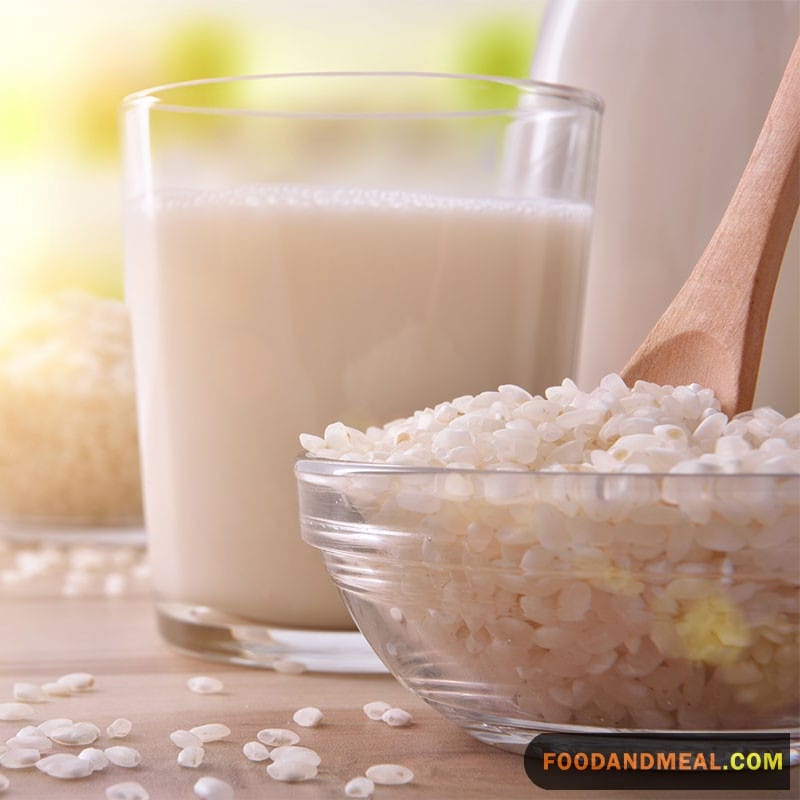
Start your morning on a comforting note with a nourishing bowl of oatmeal infused with the goodness of Rice Milk. The subtle sweetness of Rice Milk beautifully complements traditional Japanese dishes like Gyoza or Karaage, adding a delightful twist to familiar flavors.
Feel the warmth and comfort of a homemade bowl of Katsudon, where the gentle creaminess of Rice Milk enhances the overall richness of the dish. Dive into the soothing embrace of Miso Soup, now with a touch of sweetness from the Rice Milk, creating a harmonious and comforting blend of flavors.
Let your creativity flow as you experiment with Rice Milk in unexpected places, like incorporating it into a refreshing Ponzu Sauce or crafting a luscious Pesto Panini. The creamy texture of Rice Milk lends itself well to both sweet and savory recipes, offering a wholesome and delicious alternative for your culinary adventures.
List of 9 FAQs on Rice Milk
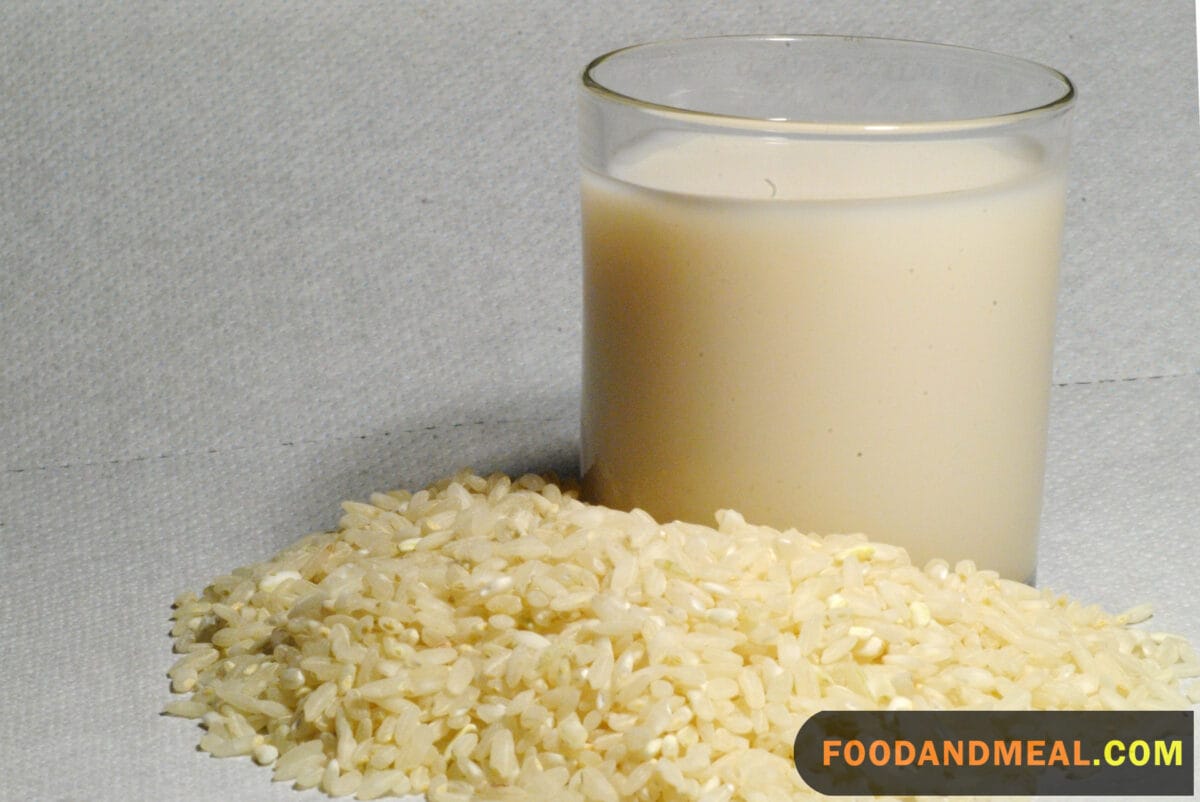
- Is rice milk good for you? Certainly! Rice milk can be a nutritious option, providing a dairy-free alternative with essential nutrients. It’s often enriched with vitamins and minerals, promoting overall health.
- Does rice milk taste like milk? Rice milk has a naturally sweet and mild flavor, but it doesn’t exactly replicate the taste of dairy milk. It has its unique profile, offering a pleasant and versatile taste.
- Is rice milk better than oat milk? The choice between rice milk and oat milk depends on personal preference. Rice milk is naturally sweeter, while oat milk has a creamier consistency. Both can be nutritious additions to your diet.
- How is rice milk made? Rice milk is made by soaking rice, blending it with water, and then straining the mixture. It can be flavored with sweeteners or enhancers like vanilla for a personalized touch.
- Can I use any type of rice for making rice milk? Absolutely! While white rice is commonly used because of its mild flavor, brown rice offers a nuttier taste. Some even experiment with black or red rice for a unique flavor twist. Each variety brings a slightly different nuance to the milk.
- Why does my rice milk have a chalky texture? If the rice milk has a chalky texture, it’s possible that the mixture wasn’t blended long enough or the rice wasn’t cooked thoroughly. Ensure the rice is well-cooked and blend the mixture on high to achieve a smoother consistency.
- How can I sweeten my rice milk naturally? There are several natural sweeteners you can use: maple syrup, agave nectar, or dates are excellent options. Just blend them in with the rice and water until everything is smooth.
- Is rice milk gluten-free? Yes, rice milk is inherently gluten-free, making it a great option for those with gluten intolerances or celiac disease. However, always check packaging if buying store-bought versions to ensure no gluten-containing additives have been used.
- How should I store leftover rice milk? Store leftover rice milk in a sealed container in the refrigerator. It’s best consumed within 3-5 days. Remember to give it a good shake or stir before using, as separation is natural.
Conclusion
Rice milk is a popular dairy-free milk alternative that offers several potential health benefits. As summarized in this article from VeryWell Health, rice milk is naturally lactose-free, making it easy to digest for those with lactose intolerance. It’s also a good source of antioxidants that can help reduce inflammation in the body.
However, rice milk is not necessarily a suitable option for everyone. As explained on Food and Meal, rice milk has a high glycemic index which means it can spike blood sugar levels. People with diabetes or prediabetes should use caution when consuming rice milk regularly. The beverage also contains very little protein or calcium compared to dairy milk.
When choosing a rice milk, check the label for added vitamins and minerals. Opt for unsweetened versions to keep carbohydrates in check. Moderating portion sizes is also wise to limit exposure to arsenic that may be present in rice products.
Hi! I'm Nazia of ‘Nazia Cooks’, a self-taught baker and cook residing in Chennai. Rooted in the rich South Indian culinary landscape, my palate has expanded to embrace global flavors. I revel in crafting fusion dishes, melding traditions to birth unique tastes.




